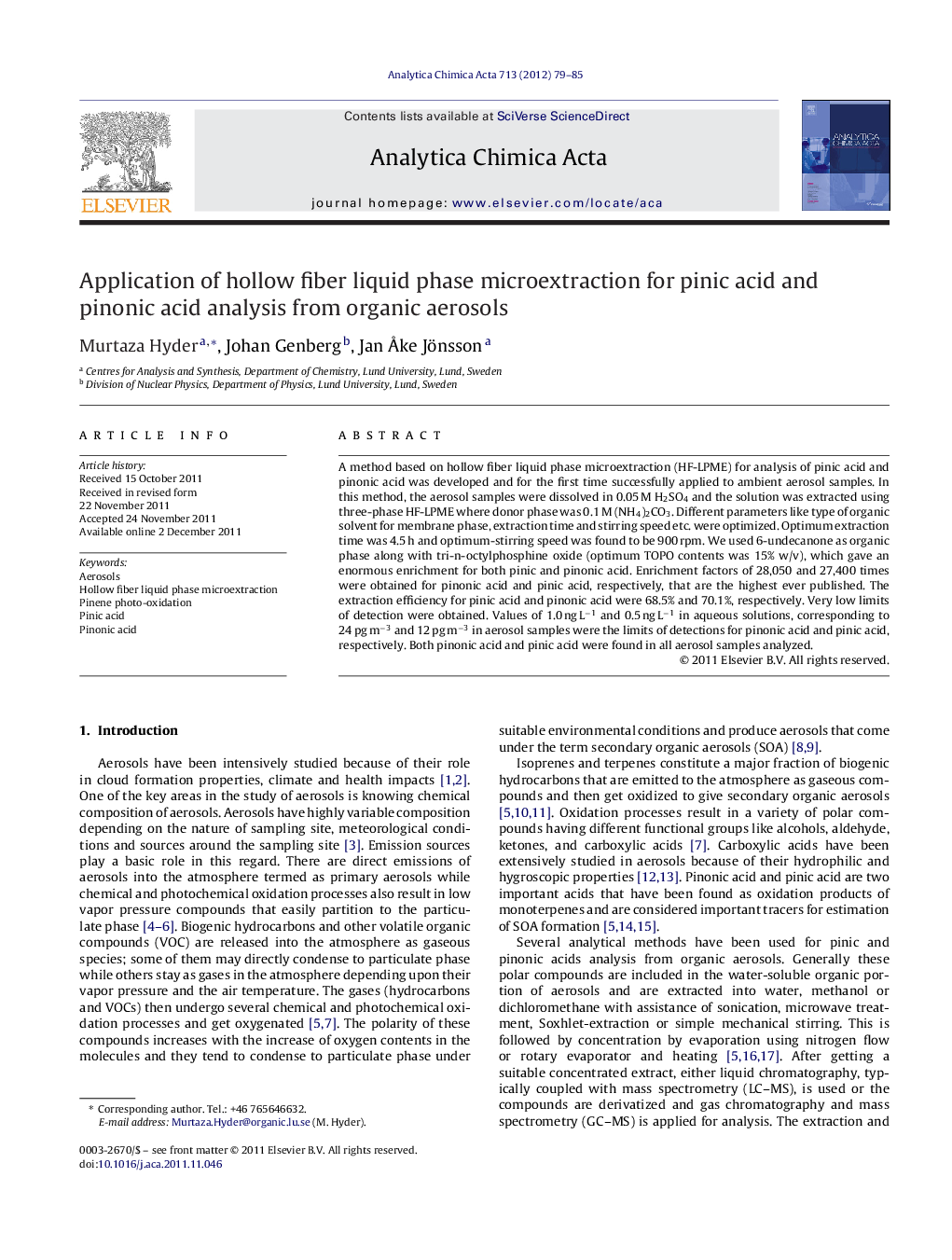| Article ID | Journal | Published Year | Pages | File Type |
|---|---|---|---|---|
| 1166410 | Analytica Chimica Acta | 2012 | 7 Pages |
A method based on hollow fiber liquid phase microextraction (HF-LPME) for analysis of pinic acid and pinonic acid was developed and for the first time successfully applied to ambient aerosol samples. In this method, the aerosol samples were dissolved in 0.05 M H2SO4 and the solution was extracted using three-phase HF-LPME where donor phase was 0.1 M (NH4)2CO3. Different parameters like type of organic solvent for membrane phase, extraction time and stirring speed etc. were optimized. Optimum extraction time was 4.5 h and optimum-stirring speed was found to be 900 rpm. We used 6-undecanone as organic phase along with tri-n-octylphosphine oxide (optimum TOPO contents was 15% w/v), which gave an enormous enrichment for both pinic and pinonic acid. Enrichment factors of 28,050 and 27,400 times were obtained for pinonic acid and pinic acid, respectively, that are the highest ever published. The extraction efficiency for pinic acid and pinonic acid were 68.5% and 70.1%, respectively. Very low limits of detection were obtained. Values of 1.0 ng L−1 and 0.5 ng L−1 in aqueous solutions, corresponding to 24 pg m−3 and 12 pg m−3 in aerosol samples were the limits of detections for pinonic acid and pinic acid, respectively. Both pinonic acid and pinic acid were found in all aerosol samples analyzed.
Graphical abstractFigure optionsDownload full-size imageDownload as PowerPoint slideHighlights► A method based on hollow fiber liquid phase microextraction (HF-LPME) was developed. ► HF-LPME was applied for the first time to aerosols for pinic and pinonic acid analysis. ► Very low limits of detections under 50 pg m−3 were obtained. ► An enrichment factor up-to 28,050 times was obtained that is higher than already published results.
